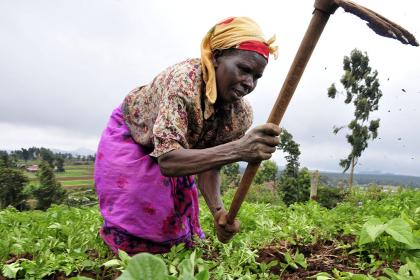
The least developed countries (LDCs) are a group of countries that have been classified by the United Nations as least developed in terms of their low gross domestic product (GDP) per capita, weak human assets and high degree of economic vulnerability.
This Report argues that the LDCs need to go beyond business as usual in order to promote inclusive and sustainable development and it suggests how South–South cooperation supports such a transformational agenda.
The Report shows that despite strong GDP growth during the last decade, the benefits of growthwere neither inclusive nor sustainable, mainly because growth was not complemented by structuraltransformation and employment creation. Growth and trade has not-recovered to pre-crisis levelsafter the global recession of 2009. Most LDCs continue to deepen their specialization in exports ofprimary commodities and low-value, labour-intensive manufacturing, rather than diversifying intomore sophisticated products. Growth projections also indicate that the poorest countries of theworld could face a more volatile and less expansive global economic environment in the comingdecade.
Further, the Report examines how South–South cooperation could support development LDCsagainst this background. It shows that there are intensifying economic relationships between theLDCs and other developing countries and that these helped to buffer LDCs from the downturn inadvanced economies. A major new trend in the pattern of integration over the last decade or sohas been the deepening and intensification of economic and political ties with more dynamic, largedeveloping countries, acting as growth poles for the LDCs. While intensifying South–South relationspresents major new opportunities for LDCs in terms of markets, foreign direct investment, remittancesand official financing, they also bring many challenges, ranging from extreme competition tode-industrialization. Therefore, the long-term impact of South–South economic relations on theLDCs still remains a puzzle.
The Report explores how the potential of South–South cooperation can be turned into a realitythat promotes the development of productive capacities, structural transformation and decentemployment in the LDCs. It argues that the benefits of South–South cooperation will be greatestin the LDCs when a dynamic two-way relationship is established in which policies carried out bycatalytic developmental States in the LDCs and South–South cooperation reinforce each otherin a continual process of change and development. In such a dynamic relationship, the catalyticdevelopmental State in the LDCs enhances and shapes the benefits of South–South cooperation,and South–South cooperation supports both the building of the catalytic developmental State in theLDCs and the successful achievement of its objectives.
New modalities and structures are required to strengthen the interdependence between the twophenomena in the post-crisis environment. In this regard, the Report claims that developmentalregionalism is particularly important. Given that financing productive capacities still remains amajor challenge for most LDCs, the Report revisits the role of regional development banks andproposes new modalities through which a small part of the reserves that have accumulated indeveloping countries and that are managed by sovereign wealth funds could support the financingof development in the LDCs. South–South cooperation should be a complement to North–Southcooperation.




